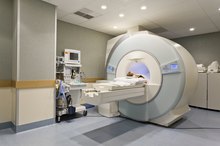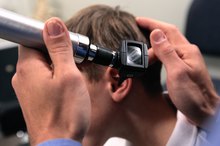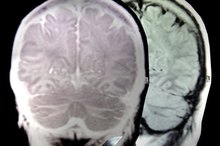Four Main Parts of the Brain
The brain is divided into four main parts which are further divided into smaller sections, each performing specific brain functions. These four main structures are the cerebrum, the cerebellum, the diencephalon, and the brainstem. All mammalian brains contain these four structures, though they vary in overall size and distribution depending on the organism. Each part of the brain serves specific bodily functions related to the nervous system, of which the brain is the command center.
Cerebrum (Latin for "brain")
The cerebrum is the largest part of the brain in humans and the most recent in terms of our evolution. Higher cognitive functions such as judgment, imagination, perception, thought and decision-making occur here. The cerebrum also contains the cerebral cortex, a densely layered collection of neural pathways that give the brain’s exterior its wrinkled appearance. Scientists believe the frontal lobe in the front of the cerebral cortex is especially important for personality and intelligence. In addition, the cerebrum is divided into two symmetrical hemispheres that each play slightly different roles regarding speech, language learning, and vision.
Cerebellum (Latin for "small brain")
What Do the Parts of the Brain Control?
Learn More
The cerebellum is responsible for our voluntary motor movements, balance, equilibrium and muscle tone. This part of the brain is located above the brain stem at the back of the brain. Because of its location the cerebellum is well protected from trauma relative to the temporal and frontal lobes. Damage to the cerebellum can result in loss of motor control, weak muscles, abnormal eye movements, slurred speech, and staggering.
Diencephalon
The diencephalon contains the thalamus and the hypothalamus. The area functions as a kind of relay point between subcortical areas of the brain and the cerebral cortex. The thalamus and hypothalamus relay information about the auditory, visceral, visual, somatic and gustatory systems, also known as the five senses. Many involuntary functions also take place here including the control of immune responses, blood pressure, digestion, and body temperature.
Brainstem
Parts of the Brain That Control Primitive Reflexes
Learn More
The brainstem is the main junction between the brain and the rest of the body. Here the brain joins with the spinal chord to send and receive information from every inch of our bodies. Many important brain functions essential to our survival also occur here, including breathing, heart rate, digestion, and our body’s natural rhythms. The brain stems also includes the medulla oblongata, pons, and midbrain.
Related Articles
References
Writer Bio
Charlie Higgins is journalist, editor and translator based in Buenos Aires, Argentina. He has written for a variety of lifestyle and niche market websites, including International Food Trader, The Olive Oil Times, microDINERO, Sounds and Colours, Connecting Worlds and The Buenos Aires Reader.








